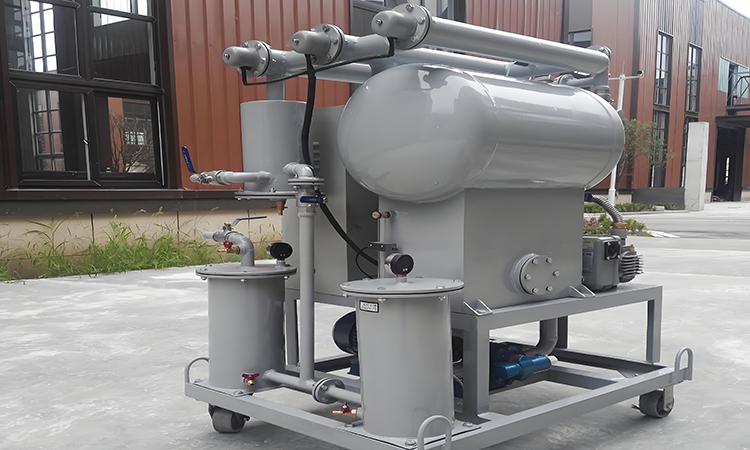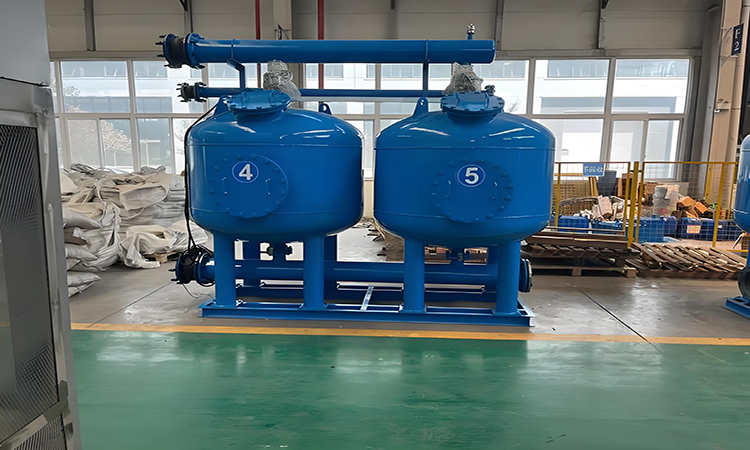In marine engineering, the importance of marine oil purifiers is undoubted. These complex systems are vital to keep the efficiency of vessels and protect marine ecosystems. However, just like any other machinery, marine fuel oil purifiers are also possible to fail. That may disrupt operations and jeopardize environmental safety.
Components of a Marine Oil Purifier

Understanding these key components of a marine oil purifier is fundamental to maintaining the intricate workings of these systems. By recognizing the role each component plays in the purification process, marine engineers and operators can effectively maintain and troubleshoot these systems, ensuring their reliability and efficiency in safeguarding marine environments and supporting the seamless operation of vessels.
The core of this system looks like a bowl. It has the capacity to separate oil, water, and contaminants. It is composed of three different areas: the inlet area for bringing in oil, the centrifuge chamber appearing separation, and the discharge zone for releasing the oil and contaminants after being purified and separated.
The disc stack within the bowl consists of separator discs and spacing rings. These discs amplify the surface area for separation, while the rings maintain disc alignment and regulate fluid flow.
Facilitating the removal of separated solids, the sediment discharge system features a sludge space where solids accumulate and discharge ports for removal.
Inlet and outlet ports play a pivotal role in the system, with the inlet port allowing the entry of oil and contaminants, while the purified oil outlet and contaminant outlet facilitate the exit of purified oil and separated impurities.
As the nerve center, the control panel includes several parts: control knobs for adjusting settings, and pressure gauges for monitoring system pressure. These components are used to notice the operators of deviating from normal operations.
A heating system with heating coils and a thermostat ensures the oil remains at the necessary temperature for efficient separation.
The centrifugal pump with an impeller generates the centrifugal force needed for separation, with inlet and outlet connections maintaining the oil flow.
Regulating system pressure, the pressure control system features a pressure regulator and safety valve to prevent damage from excess pressure.
Filters, including pre-filters and fine filters, capture particles of varying sizes to enhance purification.
Lastly, alarms and safety features such as high-temperature alarms, low-pressure alarms, and emergency shutdown mechanisms ensure timely responses to critical situations, safeguarding the system and vessel.
Ensuring Operational Integrity: Troubleshooting the Marine Oil Purifier Bowl

The marine oil purifier bowl serves as the cornerstone of the vessel’s components, necessitating prioritized attention to troubleshoot any arising issues.
One significant issue that may arise is a decrease in purification efficiency. This can stem from various factors, such as using an incorrect gravity disc size, inadequate feed temperature or flow rate, worn or damaged discs or valves, excessive sludge buildup, or the ingress of air into the system. Remedies for this problem include selecting the appropriate gravity disc size, adjusting the feed temperature or flow rate, repairing or replacing damaged components, cleaning out accumulated sludge, and removing any air present in the system.
Another issue that may occur is high vibration or noise emanating from the ship fuel oil purifier bowl. This can be caused by an imbalance in the purifier bowl, loose or broken parts, misalignment of the drive shaft or motor, or faulty bearings. To address this, it is essential to balance the purifier bowl, tighten or replace loose parts, align the drive shaft or motor correctly, and replace any faulty bearings.
Oil leakage from the bowl of a fuel oil purifier for boat is a serious concern that can have detrimental effects on the vessel’s engines and machinery. Several factors can contribute to oil leakage, including gasket failure, cracks in the bowl, damage to the seal groove, misalignment of the bowl, high vibration, overpressure, inadequate maintenance, poor-quality or contaminated oil, and wear and tear due to aging components. To prevent oil leakage, it is vital to follow the manufacturer’s maintenance guidelines, conduct regular inspections, use high-quality replacement parts, ensure proper installation and alignment, monitor operating parameters, and maintain clean oil free from contaminants.
By proactively monitoring the operation of the ship fuel oil purifier bowl, performing preventive maintenance, and promptly addressing any issues that arise, engineers and operators can uphold the efficiency and longevity of the equipment, safeguard the vessel’s systems, and ensure the quality of fuel or lube oil onboard.
Marine Oil Purifier Component Troubleshooting Essentials

Except for some matters related to the marine oil purifier bowl, there may also appear some common issues about other sectors in marine oil purifier systems. Solutions for these questions are as follows:
Heater Failure: If the heater in the system fails, it can lead to inadequate heating of the oil, affecting the purification process. To address this, engineers should check the heater for malfunctions, replace faulty heating elements, and ensure proper electrical connections.
Clogging in Inlet or Outlet Pipes: Blockages in the inlet or outlet pipes can impede the flow of oil through the purifier system, reducing efficiency. Clearing these obstructions, using appropriate filters, and maintaining clean pipes can help resolve this issue.
Contaminated Oil: Contamination of oil with water, sludge, or other impurities can compromise the purification process. Implementing effective filtration systems, conducting regular oil analysis, and ensuring proper maintenance practices can help prevent oil contamination.
High Operating Temperatures: Elevated operating temperatures can indicate issues such as overheating components or poor lubrication. Engineers should monitor and regulate operating temperatures, check lubrication systems, and address any overheating concerns promptly.
Faulty Control Systems: When there are malfunctions in the control systems of marine oil purifier, they may lead to low-efficiency operations. So, it is helpful in preventing malfunctions in systems and making sure the stable operations by regular maintenance of control panels, sensors, and actuators, as well as calibration checks.
Essential Maintenance Practices for Marine Oil Purifiers

Here are some crucial steps for maintaining the fuel oil purifier for boat to ensure its optimal performance and long-term usage. To find leaks, corrosion, and the conditions of components, regular visual checks are essential. Otherwise, we also need to clean bowls, plates, and pipes to fight against sludge buildup. Proper lubrication of moving parts helps reduce wear and friction. Alignment checks for components like the drive shaft and motor are important to prevent vibration. Filter replacement should be done as required to maintain oil flow and efficiency. Monitoring operating temperatures is vital to prevent overheating. Control system maintenance, including inspecting panels and sensors, is essential to prevent system failures. Implementing corrosion prevention measures safeguards components from rust and corrosion, ensuring the reliability of the marine fuel oil purifier system aboard the vessel.






